Our Blog & Pet Health Topics
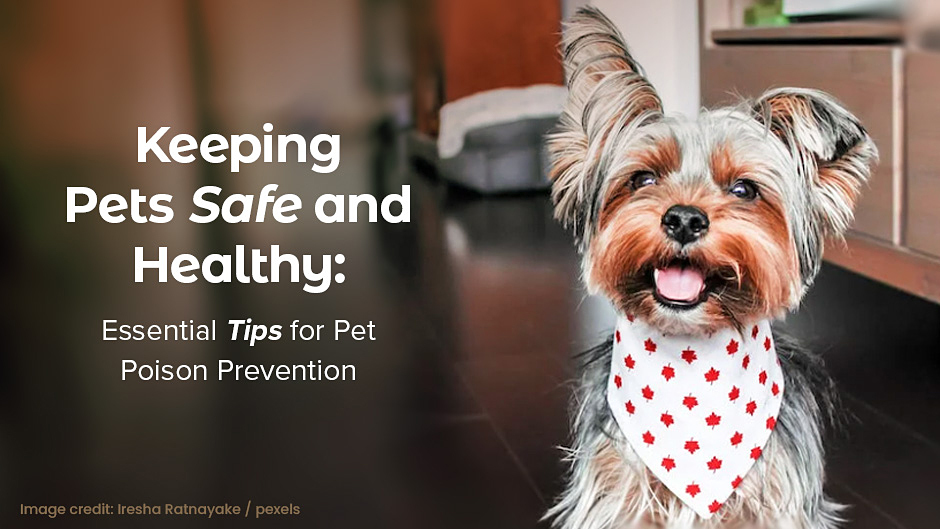
Keeping Pets Safe and Healthy: Essential Tips for Pet Poison Prevention
According to the Pet Poison Helpline, every year, thousands of pets are affected by accidental poisoning. To raise awareness about common poisons and how we can prevent our pets from being exposed to them, Pet Poison Prevention Month is observed in March.
Here are some common pet toxicities that every pet owner should be aware of:
Human Medications:
Over-the-counter and prescription medications can be extremely dangerous for pets if ingested in large amounts or over a prolonged period. Common examples include painkillers, antidepressants, and cold and flu medications.
Toxic Plants:
Certain plants such as lilies (for cats) and azaleas can cause serious harm if consumed by pets.
Household Cleaning Supplies:
Many cleaning products contain chemicals that can be harmful or fatal if ingested by pets. Even if pets don’t ingest a substance, they can still be harmed if a corrosive or caustic substance touches their skin.
Common Human Foods:
Grapes, onions, garlic and alcohol can all be toxic to pets if ingested. Chocolate, sugar-free gums, and mints may also be hazardous.
Rodenticides:
Rat, mouse and mole poisons can inadvertently be eaten by pets. To prevent this, use bait stations that are not accessible or toxic to your pet. Even better, opt for pet-safe options for rodent control.
Preventing Accidental Poisonings:
The best way to prevent accidental poisonings is to keep all potential toxins away from your pet’s reach and never leave them unattended. This may feel daunting. After all, with so many of the items we consume or have access to every day, how can we make sure our pets don’t get a hold of anything?
The key is to put safety protocols in place like keeping household cleaners and medications locked away, avoiding giving your pet human food or snacks and double-checking that any plants you bring into the house are safe for pet consumption. Take a look through your home, through your pet’s eyes, and take note of what you may see if you were at their level.
Preventing pet poisoning starts with being proactive about keeping toxins out of reach. Here are some tips on how you can protect your pets:
- Store all medications in a secure location where your pet cannot access them.
- Research which plants are toxic for your particular type of pet and avoid bringing them into your home.
- Keep snacks and treats only to items specifically made for animal consumption. Be mindful of the garbage and compost areas where toxic food items may be present.
- Keep all cleaning supplies locked up or stored in a high cabinet.
- If you must use rodenticides, make sure they are placed in areas that your pet cannot access.
If you suspect that your pet has been poisoned, time is critical. Contact us immediately to receive the best advice and prompt treatment. Let’s work together to raise awareness about pet poison prevention and help keep our pets safe.
Pet Poison Prevention Month serves as an important reminder for all pet owners to take steps toward keeping their animal companions safe from potential hazards within their homes or outdoors. By being vigilant and taking preventative measures, we can help ensure our beloved companions live long and healthy lives free from harm caused by accidental poisonings.
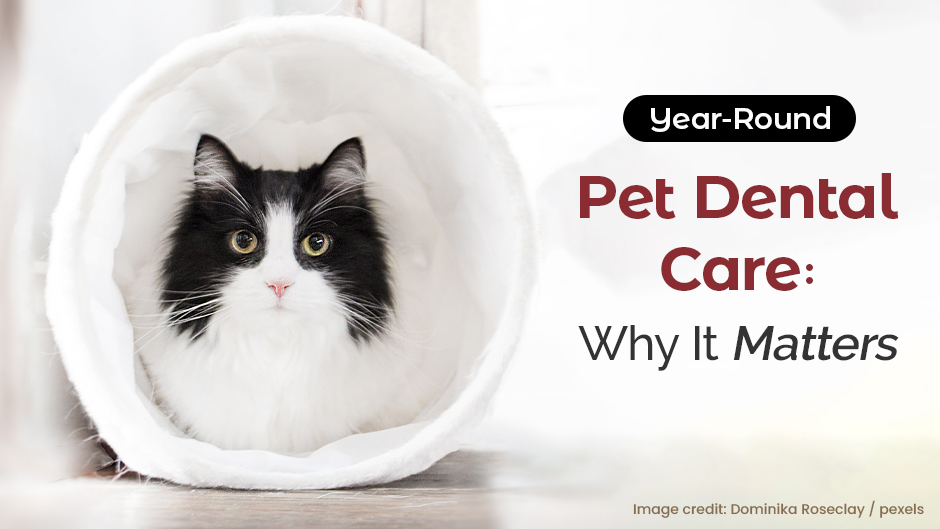
Year-Round Pet Dental Care: Why It Matters
February is Pet Dental Health Month and it’s a great time for pet owners to brush up on their pet care knowledge. Just like humans, pets need good dental healthcare. That’s why it’s important to understand the basics of taking care of your pet’s teeth and gums all year round. Let’s dive into the significance of proper pet dental health and how you can keep your pets healthy and happy.
Why Is Pet Dental Health Essential?
Your pet’s teeth are an essential part of their overall health and well-being. Poor dental hygiene can lead to tooth decay, infections, and other serious medical conditions such as heart disease and kidney damage. Dental decay and infections can also affect your pet’s appetite, energy levels, and overall quality of life. Therefore, taking care of your pet’s dental health should be a priority all year long, not just during Pet Dental Health Month in February.
Can you imagine eating dinner if your teeth ached or you had excruciating mouth pain? Our pets are unable to vocalize to us when they are feeling uncomfortable, so it’s crucial for us to take the necessary steps to ensure their teeth and gums are healthy.
How To Take Care Of Your Pet’s Teeth & Gums
The first step in taking care of your pet’s dental health is regular brushing with pet-specific toothpaste (never use human toothpaste). This will help remove plaque and tartar buildup from their teeth which can cause decay or gum disease. You can also ask us about supplementing brushing with oral rinses or wipes designed specifically for pets. These can help reduce bad breath and discoloration on their teeth. Finally, regular checkups at the vet are key for spotting any potential problems before they become too severe.
In addition to regular brushing, there are some other ways you can keep your pet’s mouth healthy. Providing them with chew toys that help scrub away some plaque buildup or giving them dental treats that are formulated to reduce tartar build-up while freshening breath naturally may be beneficial. There are a variety of options available, so you should look for ones that work best for your pet based on size, age, breed, and lifestyle. Our veterinary team can point you in the right direction for the products we recommend.
For the best dental health, getting your pet’s teeth professionally cleaned with us will help identify issues below the gumline. We can then remove or treat teeth that may present additional health issues to your pet.
Signs of Oral Problems in Pets
It can be tough for owners to tell if their pets have any kind of oral problems since they can’t communicate when they’re feeling pain or discomfort in the same way that humans do. As responsible pet owners, we need to pay close attention to any changes in our pets’ behavior such as decreased appetite or difficulty chewing food—these may be signs of an underlying dental issue that needs immediate attention. Other signs include bad breath (which is common with periodontal disease) or drooling or bleeding from the mouth (which could indicate an abscess). Contact us immediately if you notice any of these signs in your pet.
Taking care of your pet’s dental health is essential for keeping them healthy and happy throughout the year – not just during Pet Dental Health Month in February! With these tips in mind, you’ll have one less thing to worry about when it comes to keeping your furry family member happy and healthy!

Kick off 2023 with Tips to Keep Your Pet Healthy
As we move into the New Year, it is a perfect time for resolutions and looking at the year as a whole. Just as for ourselves, and the goals we may set, the New Year provides a moment to pause and consider how we can plan for our pet’s health and wellness for the next twelve months. Here are some steps you can take to help your pet have a healthy year ahead!
Wellness Checks
During wellness visits, we will check for any potential health issues, conduct a parasite screening, perform a physical exam, and discuss any concerns you may have about your pet’s health. Not only do these exams help to identify illness, but they establish a baseline of health to compare with future examinations.
These visits can also be a good time to ask us about behavioral concerns that you may be seeing in your pet. We can assist with getting to the root cause behind those behaviors, and help develop a plan to resolve them.
Dental Exams & Professional Dental Cleaning
Dental care is essential for all pets, just as it is for people. Poor dental health can lead to a host of oral diseases including periodontal disease and tooth decay, and eventually even cause damage to pets’ internal organs, such as their kidneys and heart. Regular brushing at home and professional dental cleaning from your veterinary team can help prevent these problems from developing.
Vaccinations
Vaccines are an important part of keeping our pets healthy and safe from contagious diseases such as rabies, distemper, parvovirus, and many others. Vaccines are tailored to each pet based on age, breed, lifestyle factors such as indoor/outdoor status, travel plans, etc., and local ordinances which may require specific vaccinations. The best way to determine which vaccines are best for your pet is to consult with us and we will be able to provide personalized advice based on your pet’s unique needs.
Parasite Prevention
Parasites such as fleas and ticks can cause serious harm to both humans and pets. Fortunately, there are several methods available for preventing parasites including topical treatments, chewable tablets, or even injections. It’s important to consult with us before using any parasite prevention products as some may not be appropriate for use in all cases (e.g., puppies under 8 weeks old).
Physical Activity & Mental Enrichment
Exercise helps keep our pets healthy both physically and mentally! Activity levels vary greatly between species and breeds so pet owners need to consider what activity level is appropriate for each dog or cat. In addition to physical activity such as walking or playing fetch/chase games with toys, mental enrichment activities like hide-and-seek with treats or food puzzles can help engage their minds in positive ways, too.
If you have a senior pet or a pet with health conditions, ask us about specific physical and mental activities that may be appropriate for them.
Nutrition
All of us have likely heard the adage, “You are what you eat”, and this applies to our pets, as well. A diet rich in nutrients is essential to overall health. We can help you choose the right food for your pet’s specific life stage, activity level, and health status. Pet owners are targeted by constant marketing for various diets and brands of food on TV, social media, and the Internet. We are here to help you sort through the options and make informed decisions about your pet’s specific nutritional needs.
Spending Time Together
Last, but certainly not least; spending quality time together with our pets should always be part of our routine. Whether it’s taking them out on walks around the neighborhood or just sitting down together while they curl up beside us; actively engaging with our pets helps create a bond that strengthens over time – something invaluable and a gift to both.
Happy New Year! Thank you for choosing our veterinary team to be here with you each step of the way to help your pet have a happy and healthy start to 2023!

5 Ways to Spoil Your Pet This Holiday Season
The holidays are a time for family, friends, and fun. But for pet owners, they can also be a time to spoil their furry friends! There are so many ways to make your pet’s holiday season special. In this blog post, we will discuss five of the best ways to spoil your pet this year. From gift ideas to treats to activities, we have you covered!
Get your pet a new toy or interactive game
Whether it’s a squeaky toy, catnip-filled mouse, or puzzle game, your pet will love spending time with their new toy. Not only are toys great for playtime, but they can also help keep your pet mentally stimulated and engaged. Look for toys that are specifically designed for your pet’s age and size to ensure the best experience.
Buy them a special treat or food
Pets love treats! You can buy them a special treat or food to make their holiday season extra special. Ask one of our veterinary team members about which treat or food may be beneficial for your pet’s health needs and lifestyle.
Invest in a food puzzle
Investing in food puzzles for your pet can be a great way to add some extra stimulation and entertainment. Not only will it provide your pet with mental and physical stimulation, but it will also help keep them from getting bored and engaging in unwanted behaviors. Food puzzles come in a variety of shapes, sizes, and types that all work to keep your pet engaged, active, and entertained.
Plus, if you have a pet that eats too quickly or is overweight, food puzzles can help them to eat more slowly.
Schedule their veterinary visit exam and dental for 2023
Good pet care is important year-round, and this can be a fantastic time to get your pet’s annual veterinary checkup and dental scheduled for the upcoming year. You’ll be kicking off the new year on the right “paw”, and have one less thing to worry about in 2023!
Give your pet the gift of time
One of the best gifts you can give your pet this holiday season is spending quality time with them. Take them for an extra walk, play fetch, or just sit together and indulge in a relaxing movie together. This special bonding time will be not only fun for your pet, but also beneficial to their mental health and well-being. And, with the stress the holidays can bring, you’ll benefit, too!
These are just a few of the many ways to spoil your pet this holiday season. Get creative and come up with your own fun traditions or activities to make this holiday season the best ever. Wishing you and your pets a joyous and safe holiday season!

The Benefits of Adopting a Senior Pet
One of the most rewarding things about being a pet owner is knowing that you’ve given an animal a loving home for the rest of their days. And what could be more rewarding than giving a senior pet a “new leash on life”? Senior pets are often passed over in favor of puppies and kittens, but they have so much to offer! Here are five reasons to consider adopting a senior pet today:
1. Senior pets are often already housebroken
When you adopt a senior pet, you’re getting an animal that is already accustomed to living in a home environment. This means they’re likely already housetrained and have experience interacting with people and other animals. This can be a big relief if you’re worried about dealing with accidents or bad habits, and it’s one less thing you’ll have to worry about as you settle your new pet into their new home.
Of course, depending on the pet, if they’ve not had training, you’ll still need to be prepared to do some work with them on things like learning to walk on a leash or getting used to a new routine. But overall, senior pets can be wonderful to transition into your home.
2. Senior pets are often calmer and less destructive
Puppies and kittens are notoriously active, which can lead to some destruction around the house as they explore their surroundings. Senior pets are often much calmer, and this can mean fewer destroyed shoes and shredded couch cushions. If you’re looking for a low-key animal companion, a senior pet may be the perfect fit for you.
3. Senior pets are more likely to be spayed or neutered
Since senior pets have likely already been spayed or neutered, this is one less thing you’ll need to worry about. This also means that they’re less likely to mark their territory or try to escape in search of a mate, which can be a common issue with younger animals.
Being spayed or neutered also helps reduce the risk of certain cancers.
4. Senior pets are often observed in their foster homes or shelters, so you have insights into their behaviors and mannerisms
When you adopt a senior pet, chances are the staff at the shelter or rescue have had plenty of time to get to know their personality and quirks. This means they can give you a pretty good idea of what to expect in terms of energy level, temperament, and behavior. This can be helpful in deciding whether or not a particular pet is a good fit for your home and lifestyle.
They also have the opportunity to observe the pet with other pets and people, and this can give you some valuable insights into how your new pet will do in those situations. For example, if you have other pets at home, the shelter staff can tell you if the senior pet you’re interested in does well with other animals. They can let you know how the pet relates to people, too, which can be helpful in understanding how the pet may react within your family dynamic.
5. Adopting a senior pet means you’re giving them a second chance at a happy life
Senior pets often have a harder time getting adopted than younger animals, and as a result, they can end up spending their later years in shelters or rescue organizations, often due to no fault of their own. When you adopt a senior pet, you’re not only giving them a loving home, but you’re also giving them a second chance at happiness.
When you adopt a senior pet, you’re giving them a second chance at a happy life – which is something they’ll be forever grateful for.
Bonus tip!
6. Senior pets often have a lower adoption fee
One of the great things about adopting a senior pet is that they may have a lower adoption fee than younger animals. This can be a big benefit if you’re on a budget or are looking to adopt multiple pets. Lower adoption fees also mean that more people are able to adopt, which is great for senior pets in need of homes.
So, if you’re looking to add a new companion to your family, consider adopting a senior pet. They make great companions and come with a host of benefits.
If you do adopt a senior pet, we can’t wait to meet them! Make an appointment today so we can give them a check-up and help them get settled into their new home and continue on a journey of wellness.
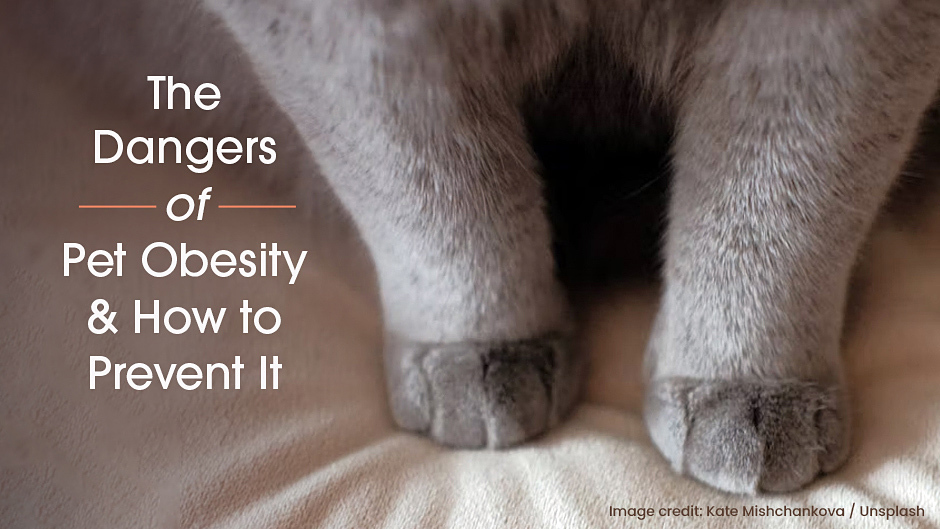
The Dangers of Pet Obesity & How to Prevent It
Just like humans, our pets can suffer from obesity. As pet owners, it’s our responsibility to make sure our animal companions stay at a healthy weight. Not only does obesity limit your pet’s mobility, but it can also lead to a host of health problems and make your pet more susceptible to disease. Here’s what you need to know about pet obesity and how to prevent it.
What Causes Pet Obesity?
There are a number of factors that can contribute to pet obesity, including genetics, age, activity level, and diet. For example, some breeds of dogs are more prone to weight gain than others. Some older pets may be more likely to be obese because they tend to be less active and have a slower metabolism. Additionally, pets who don’t get enough exercise are also at risk for weight gain. Finally, an unhealthy diet is one of the main culprits behind pet obesity. Just like with people, if pets eat too much food and consume too many calories, they will gain weight.
The Dangers of Pet Obesity
Pet obesity can lead to a host of health problems in both dogs and cats, including joint pain, orthopedic issues, respiratory difficulties, gastrointestinal problems, diabetes, high blood pressure, and cancer. One of the best ways to prevent these problems is by keeping your pet at a healthy weight.
Tips for Preventing Pet Obesity
The best way to prevent pet obesity is by feeding your pet a healthy, quality diet and making sure they get enough exercise. When it comes to diet, talk to us about how much food your pet needs each day and what type of food is best for their specific breed and health condition.
When it comes to exercise, take your dog for a walk or run every day, or play fetch with them in the backyard. If you have an indoor cat, invest in some toys that encourage them to move around and stay active. If you have questions about the right amount and type of exercise for your pet, please schedule an appointment with us.
Pet obesity is a serious problem that can lead to numerous health complications down the road. As a responsible pet owner, it’s important to do everything you can to prevent your furry friend from becoming overweight or obese. The good news is that there are plenty of things you can do to help keep your pet at a healthy weight throughout their life. We’re here to help each step of the way!

Hidden Signs of Pain: How to Recognize Discomfort in Your Pet
When our pets are sick or injured, they can’t tell us where it hurts or how they feel. However, there are subtle signs that can help you determine when your pet isn’t feeling well. Knowing how to recognize these hidden signs of pain is essential for getting your pet the help they need and improving their comfort.
In this article, we’ll discuss some of the hidden signs of pain in pets and what you can do to help.
Common Signs of Pain in Your Pet
While recognizing pain in your pet can be challenging, there are some things you should be looking for. Below are the most common signs of hidden pain in your pet.
- Decreased activity
Is your pet moving slowly or reluctant to engage in normal activities? Decreased activity is one of the most common signs of pain and discomfort. If your pet isn’t feeling well, they may be less interested in their normal activities, such as playing or going for walks. You may also notice your pet becoming more reluctant to perform simple tasks such as going up or down the stairs or jumping up on the couch.
- Decreased appetite
Meal time is usually a favorite time of day for our furry friends. However, if your pet suddenly stops finishing their meals or seems less interested in food, it could indicate an underlying problem. Pets with gastrointestinal upset may lose their appetite and have difficulty keeping their food down. Additionally, dental disease can make it uncomfortable for your pet to eat and enjoy their food.
- Change in behavior
When your pet is in pain, their behavior can change drastically. Pets who are affectionate and friendly may get aggressive or defensive. While this can be alarming, it’s natural for your pet to try to protect themselves when they’re not feeling well. In some cases, pets may also become withdrawn. You may notice your pet hiding or spending more time alone.
- Excessive Grooming
When your pet is experiencing pain or discomfort, their grooming habits can change. Excessive licking or grooming of a particular area can be a sign of an underlying problem. Additionally, continuous licking can cause a hot spot and additional trauma.
If you notice your pet licking, examine the area closely and look for any signs of injury. You’ll also want to discourage your pet from continuing to groom the area to prevent further harm.
What You Can Do to Help
Recognizing the early signs of pain is essential for getting your pet the help they need. If you notice any indication of pain, please give us a call so we can help. Our team will perform a thorough evaluation of your pet and discuss your concerns. Your observations can provide critical information to help us diagnose your pet. Once we know what’s wrong, we can discuss treatment options and pain management to help get your furry friend back on track.
Final Thoughts
When it comes to showing pain, all pets are different. It’s important to monitor your pet closely and know how to spot subtle signs of discomfort. If you have additional questions or concerns about your pet’s health, please give us a call. We hope these tips will help you identify your pet’s pain sooner and get them the essential care they need.
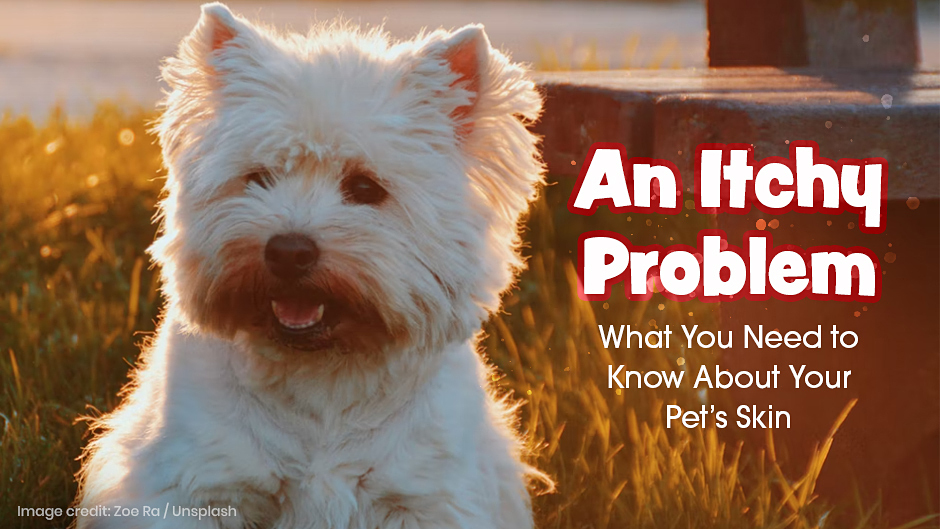
An Itchy Problem – What You Need to Know About Your Pet’s Skin
Is your pet constantly scratching? Pets can suffer from various skin issues that can cause extreme discomfort. Some pets may develop skin irritation as a result of allergies, while other pets may be itchy from fleas or other parasites. To provide your pet some itch relief, you’ll need to know what to look for and what is causing your pet’s problem.
In this article, we’ll discuss some of the most common skin issues in pets and what you can do to help.
Identifying Skin Issues
It’s normal for your pet to scratch an itch from time to time. However, excessive itching can be an early warning sign of an underlying condition that can become more serious if left untreated. If you notice your pet is itching or biting at their skin, perform a skin check to look for signs of a worsening problem.
Some of the signs to look for include:
- Red or irritated skin
- Loss of hair or fur
- Raised bumps
- Bleeding or open sores
If left untreated, pets can develop secondary bacterial infections. Because of this, it’s essential to keep a close eye on your pet’s skin and seek help if their condition does not improve.
Common Skin Conditions in Pets
While there are many causes of itchy skin, here are some of the most common skin conditions seen in pets.
- Environmental Allergies
Just like people, pets can develop environmental allergies. Some environmental allergens, such as pollen, are seasonal and may only cause problems at certain times of the year. However, pets can also develop allergies to dust and mold. These allergens can persist in your home and cause symptoms year-round if not properly addressed.
- Food Allergies
Another type of allergy your pet can encounter is a food allergy. Food allergies in pets are usually a reaction to a specific protein in their diet. In addition to skin irritation and itch, pets with this condition may also experience symptoms such as gastrointestinal upset or recurrent ear infections.
- Parasites
When you think of an itchy pet, the first thing many owners think of is fleas. Fleas and other biting insects are a common cause of skin irritation and discomfort.
Unfortunately, some pets can experience a more severe reaction known as flea allergy dermatitis. This condition is a result of an allergic reaction to flea saliva and can cause extreme discomfort long after the flea is gone.
How to Help Your Pet
If your pet is itchy, there are a few things you can do to help. The first step is to keep a close eye on your pet’s itching habits and monitor for any irritation of the skin. If your pet gets itchy after certain activities, such as playing in the grass, you may want to consider a bath to remove any environmental allergens from their coat. You should also check your pet for fleas and ensure they are on appropriate flea prevention.
We understand that getting to the bottom of your pet’s problem can be challenging, which is why our team is here to help. If your pet is struggling with a persistent itch, please give us a call. Our team will perform a thorough assessment of your pet’s condition and make recommendations based on their unique needs.
In some cases, changes to your pet’s diet or grooming habits may help resolve the problem. Medication may also be necessary to relieve discomfort or treat bacterial infections.
Final Thoughts
Skin issues are common in pets and cause significant discomfort if left untreated. If you have additional questions about your pet’s skin or would like to schedule an appointment, please give us a call. We hope this information will help solve your pet’s skin problems and get their itch under control.

Pet Fire Safety
Pets are a part of your family, and it’s essential to consider them when making emergency plans. July 15th is National Pet Fire Safety Day and the perfect opportunity to learn more about keeping your furry friends safe.
In this article, we’ll discuss some common fire dangers and what steps you can take to prepare your pet for an emergency.
Fire Dangers and Your Pet
Fire safety is a common household concern. However, when you have pets, there are additional fire hazards you should be aware of. Here are a few things to keep in mind when evaluating fire danger in your home.
- Open flames
Pets are curious creatures, and open flames can be enticing. Whether you have a lit candle or a roaring fireplace, it’s critical to keep pets at a safe distance to prevent accidental injury.
Never leave an open flame unattended, and keep candles out of your pet’s reach. Wagging tails and curious paws have been known to knock over lit candles and cause a fire. You may also want to consider a barrier to keep pets from getting too close to the fireplace.
- Stove Knobs
Does your cat enjoy playing with knobs? If you have a stovetop with knobs, this can be a potential fire danger. A cat looking for a new toy or a dog jumping up on the counter can accidentally hit a knob and turn the stove on. Not only can this cause injury to your pet, but it can also ignite items left on the stove and become a serious fire danger.
Because of this, it’s best to keep pets out of the kitchen when possible and consider putting covers on your stove knobs.
- Electrical Wires
Many pets chew on things they’re not supposed to and can cause damage to items in your home. Unfortunately, this can be a potential fire hazard when it comes to electrical wires.
Damaged wires can spark a fire and are an electrocution risk for your pet. To prevent this from happening, keep electrical wires out of reach. Furniture can be used to block access to electrical outlets, and protective covers are available to create an additional barrier between electrical wires and your pet.
Creating an Emergency Plan
While you can take certain precautions to reduce the fire risk in your home, emergencies can happen at any time. Creating an emergency plan can help you prepare and improve the chances of getting out safely. When creating your family emergency plan, remember to include your pets. Consider assigning a specific family member to gather the pets and get them out of the house safely. This can help ensure your furry friends won’t be overlooked.
Another essential part of your emergency plan is creating an emergency kit. When a fire occurs, you don’t want to waste precious time gathering food and supplies your pet may need. Put together a bag that contains your pet’s essentials, including food, bowls, medication, and leashes. You can also add a copy of your pet’s medical record and vaccine history.
Final Thoughts
Fires happen every day and can have serious consequences for the people and pets you love. We hope these tips have provided some new insight into pet fire safety and how to make sure you are prepared. If you have additional questions or concerns about fire safety and your pet, please give us a call. Our team is here to answer your questions and help you create a safe environment for your furry friends.
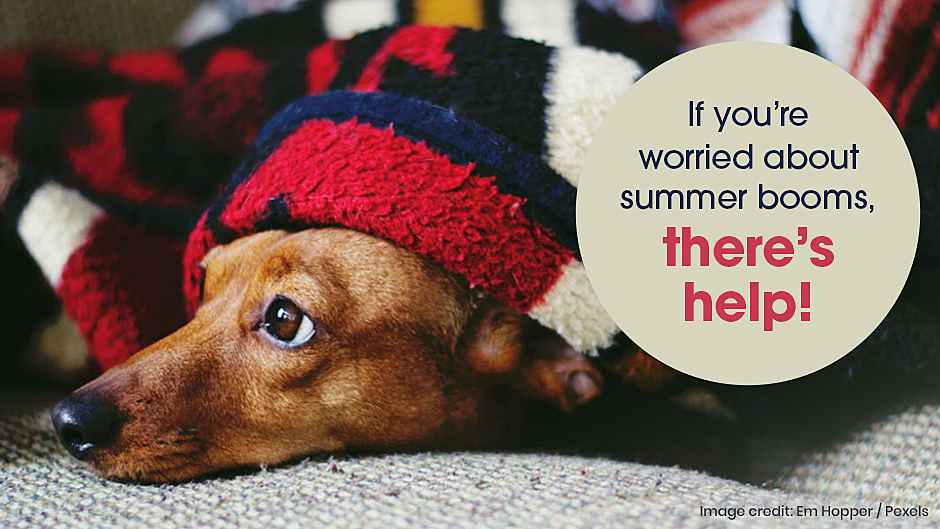
If You’re Worried About Summer Booms, There’s Help!
Does your dog have a fear of thunderstorms or fireworks? Many pets are scared of sudden loud noises and experience various symptoms due to their noise aversion. Unfortunately, thunderstorms and fireworks shows often occur more frequently during the summer months and can cause increased anxiety in your pet.
Luckily, there are ways to ease your pet’s fears, and we are here to help! Here are a few ways you can help your pet now and make sure they are prepared for the upcoming season.
Be Prepared
The first step in being prepared for summer booms is identifying your pet’s problem and creating a plan. The most common signs of a noise aversion include:
- Hiding
- Shaking
- Increased Vocalization
- House Soiling
- Destructive Behavior
- Attempts to Escape
If your pet is experiencing any of these symptoms during a noise event, it’s essential to take your pet’s condition seriously and look for ways to help. Failure to do so can seriously affect your pet’s well-being and even lead to injury.
Start by looking at your upcoming weather forecast or local events that may include fireworks. This can help you predict when these summer booms are most likely to occur and when you should start preparing your pet.
Don’t Wait!
While you may not be able to predict every boom, it’s better to be proactive in your efforts to keep your pet calm. Before an event occurs, try to set up a safe space away from windows and doors where your pet is less likely to hear any outside noise. Turning on some music or a sound machine can also be a great way to distract your pet and drown out any scary sounds.
Once your pet gets scared, it can be difficult to calm them down, and your efforts may not be as successful. Instead, take steps to calm your pet before the event occurs.
Talk to Us About a Calming Agent
In severe cases of noise aversion, calming agents can help reduce your pet’s anxiety and keep your pet safe.
If you think your pet would benefit from a calming agent, let us know as soon as possible. Don’t wait until the Fourth of July to get your pet the help they need. Set up an appointment ahead of time to discuss your pet’s condition. Our team is happy to make recommendations based on your pet’s unique needs.
Keep in mind that it may take some time to find the medication or dose that works best for your pet. Additionally, these calming agents must be given in advance of the noise event to provide the most benefit for your pet.
Final Thoughts
If your pet struggles with a fear of loud noises, the time to act is now! There are a variety of ways you can help your pet. However, it’s essential to take action soon and avoid waiting until it’s too late.
For more information about calming agents and other ways you can help reduce your pet’s fears, please give us a call. We look forward to hearing from your and helping your pet fight their noise fears!
